This document provides basic information regarding the preparation, safe handling, and nutritional value of blue crab for seafood consumers.
The blue crab ranks high on the list of seafood delicacies in Florida. It is one of Florida’s top 10 seafood products in dockside value and ranks in the top 5 in terms of pounds harvested.
Blue crab meat can be purchased all year round in pasteurized form. However, live crabs are seasonal and mostly available during the warm-water months of the year.
Buying and Storing Tips
The consumer is probably better off purchasing the crabmeat already prepared unless the picking is incorporated into a “crab boil” or “picnic type” activity. When purchasing live blue crab, make sure that there is some leg movement; if there is no leg movement or the shell is broken, the blue crab should be discarded. Live crab should be stored at 50°F in a breathable environment such as a paper bag. Do not store blue crab directly on ice; it will kill them. Three to four crabs in shell are enough for one serving.
Fresh or pasteurized cooked crabmeat is usually available for purchase as lump, flake, or claw meat. Lump meat consists of whole lumps from the large body muscles that operate the swimming legs. Flake meat consists of small pieces of white meat from the body. Claw meat consists of brownish-tinged meat from the claws. You can store an opened pasteurized crab product at the coldest part of your refrigerator (40 degrees or less) for up to 6 months. If open, pasteurized crabmeat should be consumed within three days. Fresh blue crab meat should be stored in the coldest part of your refrigerator and consumed within 7 to 10 days.
Blue crabs in seafood markets usually are sold by the dozen. An average blue crab weighs about 1/3 pound, but the edible portion is quite low. An experienced crab picker can produce about 2 1/4 ounces of meat from each pound of live blue crabs. This is about a 14 percent yield. The actual yield depends on the size of the individual crab and the experience of the crab picker. One-sixth of a pound of blue crab meat is enough for one serving.
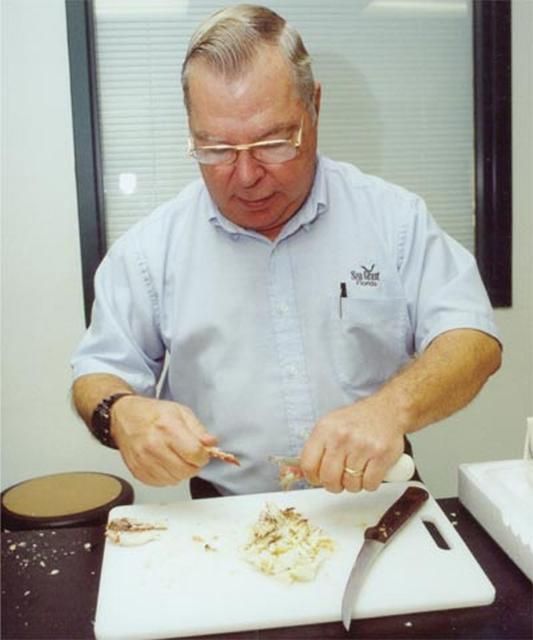
Credit: UF/IFAS
Preparation of Live Crab
Basic seafood safety tips for preparation of blue crab:
Keep raw and cooked seafood separate. Wash your hand for at least 20 seconds with soap before and after preparing the blue crab. Wash all the cutting boards and utensils with soap and hot water after the preparation of food such as raw blue crab.
For basic preparation:
Cook live crabs in boiling, salted water for 12 to 15 minutes. Drain and cool. The cooked crab’s shell is bright red, and the meat is no longer translucent.
(1) Remove the claw and set it aside for removing the meat later (Figure 2).
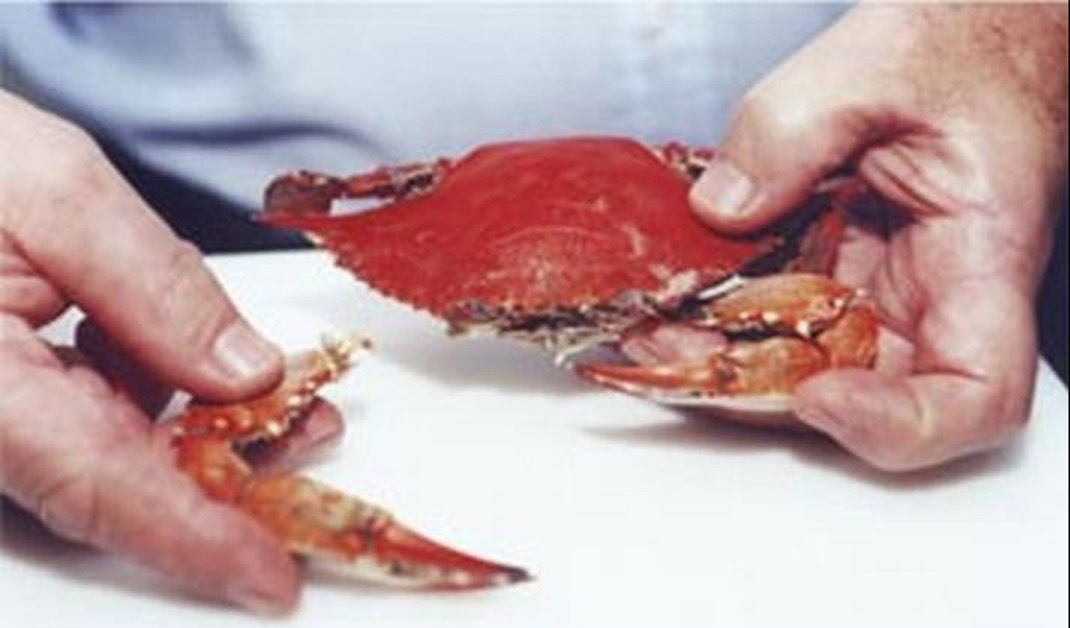
Credit: UF/IFAS
(2) Hold the crab firmly in one hand with the top shell up. Lift the top shell off with your other hand (Figure 3).

Credit: UF/IFAS
(3) Scrape out the internal organs and cut off the face (Figure 4).

Credit: UF/IFAS
(4) Slice off the top of the inner skeleton (beneath the gills) on first one side, then the other, and (5) remove the exposed meat on these slices (Figures 5 and 6).

Credit: UF/IFAS

Credit: UF/IFAS
(6) Place thumb over exposed backfin lump meat and carefully cut down and away on both sides to remove the legs (Figure 7).
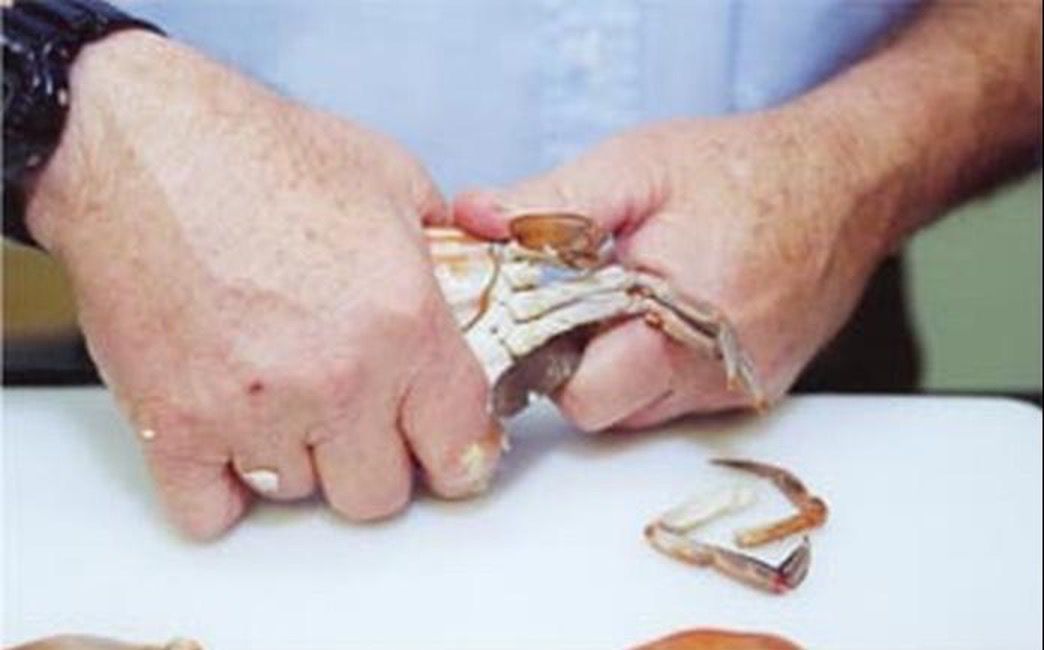
Credit: UF/IFAS
(7) At the back of the crab on each side is the backfin lump of meat. Remove this backfin lump with the point of a knife (Figure 8). Remove the white flake meat from the other pockets with the point of the knife.
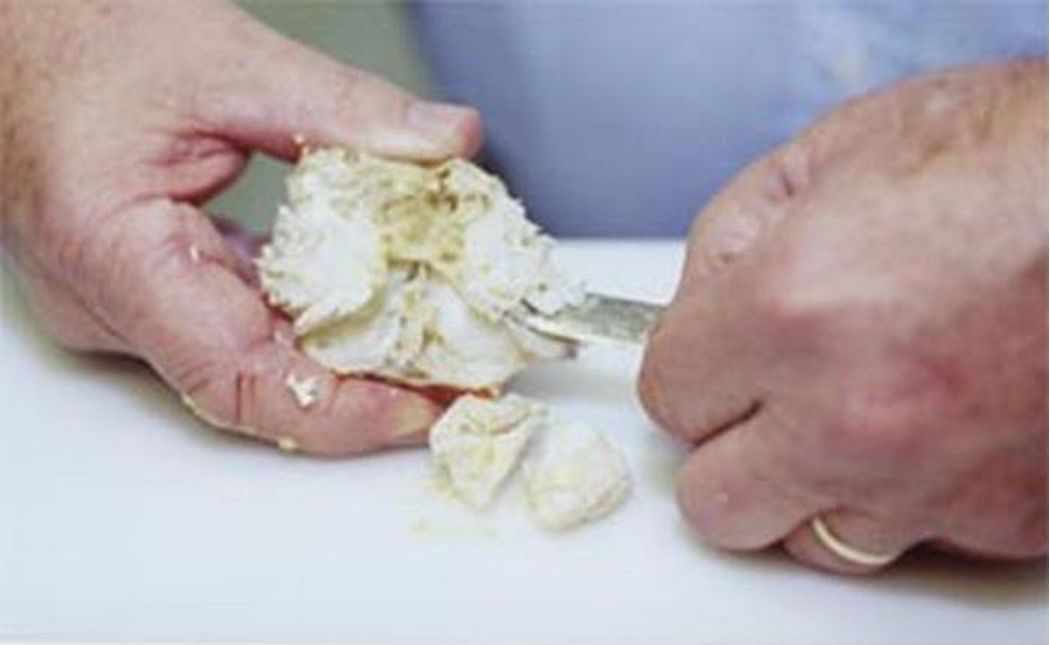
Credit: UF/IFAS
(8) Hold the claw on a hard surface with its inside portion upward. Score the claw using a crisp blow with the dull edge of a knife blade near the pincers (Figure 9).
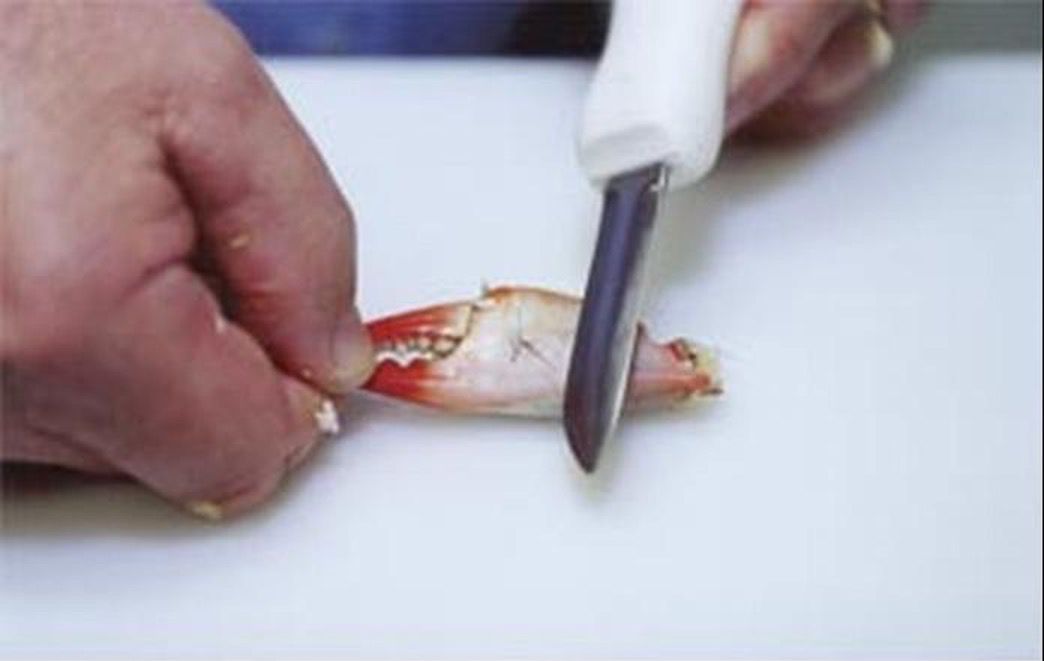
Credit: UF/IFAS
(9) Break the claw at the point of the score (Figure 10). Use in this form for serving as crab fingers, or remove the meat by clasping it with the thumb and fingers of one hand while pulling out the tendon with the fingers of the opposite hand. Crack the section to remove the meat from the remaining section of claw. Pull out the meat with the knifepoint or a small fork.
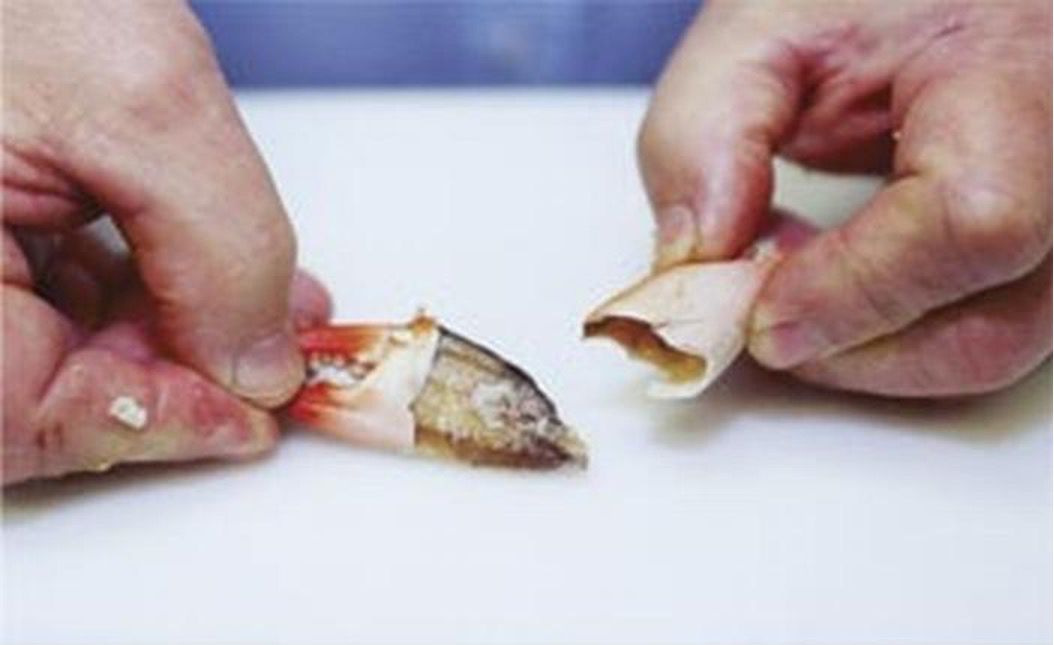
Credit: UF/IFAS
Blue crab recipes are available online through the Florida Department of Agriculture and Consumer Services, Bureau of Seafood and Aquaculture.
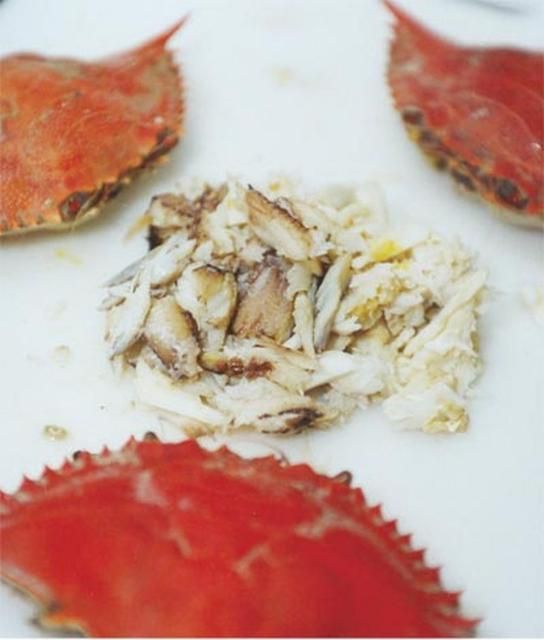
Credit: UF/IFAS
References
https://www.fdacs.gov/content/download/16809/file/P-01590_Blue_Crab_Brochure.pdf